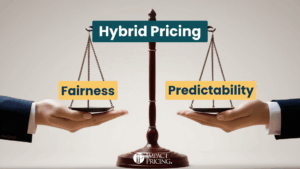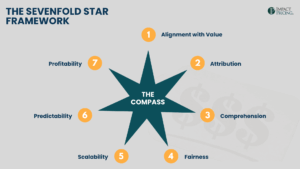It’s true. Your fixed costs matter sometimes, but they are not relevant to your pricing decisions.
Your prices should be determined by your customer’s willingness to pay. Their willingness to pay, of course, is driven by the amount of value they get for your product. That value is determined by (among other things) what else they might do with their money, and the incremental benefit your product or service gives them. Notice what you didn’t see there? Their willingness to pay does not change if you have higher R&D costs. Your fixed costs don’t matter.
Variable costs, however, do matter. For example: what if a prospect’s willingness to pay is less than your variable costs? You shouldn’t sell to them. Sometimes, especially in a retail setting, you only get to set one price for many customers who have different willingnesses to pay. In this case, variable costs matter because you are trading off incremental gross profit per unit sold, against the gross profit of lost sales.You want the net result to be a positive overall.
How Fixed Costs and Variable Costs Relate to Pricing
Again – fixed costs DO matter, just not to pricing. Fixed costs matter when you decide whether or not to get into a business. The easiest way to understand may be by looking at a video game company. EA spends millions of dollars to develop a new video game. Those millions of dollars are fixed costs. Should they spend that money on developing a new video game? It all depends on how much profit they expect the game to generate. They estimate the price they can get, the expected demand, and their variable costs. Using simple math, they estimate how much profit they can generate, and compare that to the amount of the fixed costs. Then they decide whether or not to invest the dollars into fixed costs.
A common mistake many companies make, is to calculate a “standard cost” by allocating their total manufacturing overhead (fixed costs) to individual products. For example, if they have $2M overhead, and their forecast is to sell 1M units, then they allocate $2 of fixed costs to each unit. This might be alright for accounting purposes, but it can cause bad pricing/business decisions – especially for relatively low margin products. For example, imagine this company with the $2 fixed costs allocated to each unit also has variable costs of only $0.10. Their standard costs are $2.10 ($2 fixed cost plus $0.10 variable cost). Now, a new piece of business comes in. They can sell 100,000 units if they are willing to sell them for $2.00. Do they want it? If they use their standard cost of $2.10 they would turn down this business. However, if we only look at the true variable cost of $0.10 (which is all we should look at when it comes to pricing), it could be a great deal. In this example we see that allocating fixed costs can lead us to poor business decisions.
This principle may seem complex, but it’s important.
Let’s summarize:
Fixed costs should NOT be considered in pricing. Fixed costs should be used to determine whether or not you should be in business.
Variable costs SHOULD be considered in pricing. One place they are particularly important is in determining whether or not to accept a piece of additional business.
The logic (and the hidden math) may be challenging at first, but trust me – don’t use your fixed costs while making pricing decisions.















